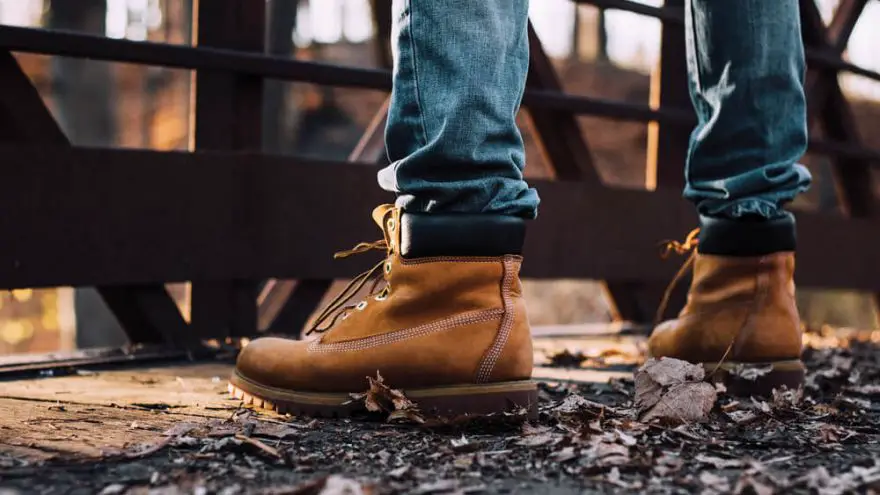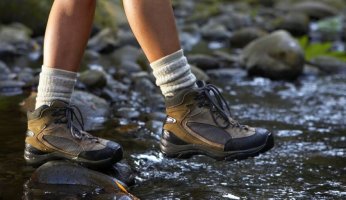Can You Hike in Steel Toe Work Boots?
 Can You Hike in Steel Toe Work Boots?
gearweare.net
Can You Hike in Steel Toe Work Boots?
gearweare.net
Contrary to popular belief, you do not need to be fully outfitted to go on a hike. You can likely put together a perfectly good outfit from your current closet. However, when it comes to shoes, you will prefer something comfortable, reliable, and efficient.
If you are not an avid hiker, don’t have the correct gear, or simply don’t want to invest in it, you may have wondered, “Can you hike in work boots?.” The short answer is, yes, you can hike in work boots if needed.
Another common question is if you can use steel-toe boots for hiking. The answer is still yes, but there are a few things you need to consider first.
First, check out the pros and cons:
Table of Contents
The Pros
- Great toe protection
- Decent ankle and foot support
- Good leg strengthening exercise
- Less expensive
The Cons
- Heavy
- Not ideal for long-distance
- Not insulated
- Less comfortable
- Typically not weather or water-resistant
- Stiff
Can you hike in steel-toe boots?
As you can see, if you need or want to, yes. Are steel boots good for hiking? Not 100%, but they will do.
The average hiking boots weigh around two pounds. The average steel-toe boots weigh about double that. With each step, you will be lifting approximately two extra pounds. Imagine doing that uphill for multiple hours. It would be a great exercise but not ideal for beginner hikers.
Depending on the season, you may need insulation to keep your feet warm. Steel-toe boots do not typically come with insulation. Of course, you can wear wool socks, but if there is snow, it will likely soak through the steel-toe boots and leave your socks wet and your feet very, very cold.
The steel toe is great for protection against bumping your toes into rocks, but it is not flexible, and the thick sole doesn’t allow you to get a feel for the ground beneath you, making uneven trails difficult to maneuver.
Can you hike in work boots?
Again, if you have no other option, yes. Luckily, regular work boots are not as heavy as steel-toe boots, so they will allow you to hike for longer distances without feeling sore. However, work boots are also stiff, making technical trails more challenging.
Additionally, the sole of a hiking boot is wider for stability and thinner. A work boot’s thick sole handles unexpected punctures better (think nails and screws). Most hiking boots also have special EVA midsoles that provide shock absorption, energy return, and comfort.
Can steel-toe boots cause foot problems?
While steel-toe boots can save you from a world of pain, they can also be the cause of some discomfort.
One of the first rules of steel-toe boots is finding the right size. If you don’t find the correct size, the break-in period will feel like it lasts a lifetime. The most common foot problems associated with these boots include chaffing from the stiff materials, blisters, soreness from the weight, and overall discomfort from wearing them for too many hours.
Wearing the boots for unintended purposes (hiking) can also intensify these possible issues.
What kind of shoes are best for hiking?
This may sound obvious, but hiking shoes are best for hiking. Proper hiking shoes provide comfort, cushion, flexibility, support, and stability. Another incredibly important feature is the weather resistance that is built-in to most hiking shoes.
If you need to cross rivers, streams or possibly encounter a rain shower, you will be thankful for the water-resistant or waterproof shoes. Many winter-specific hiking shoes also offer insulation.
While we have seen that you can use work boots as a substitute, they don’t measure up. If you plan to hike more than two times a year, it would be wise to invest in a pair of hiking boots.
Can I wear hiking boots as work boots?
This is actually a much safer bet. Hiking boots are a great substitute for work boots. As long as you don’t work in extremely dangerous conditions/need a steel toe, you can definitely wear hiking boots as work boots.
You will be missing out on toe protection and the thicker sole, which protects your feet from sharp object penetration. However, the flexibility, EVA midsole, and sticky traction are great additions to the traditional work boot.
—
In the end, most steel-toe options do not offer the same level of traction or weather resistance as a hiking boot. Work boots and steel-toe boots are generally cheaper than hiking boots because they have less intricate features and are less concerned with movement and long-term comfort.
Honestly, if you are dedicated enough, you can wear any shoe hiking. Heck, you can even hike barefoot. But before you lace up your work or steel-toe boots for hiking, think about the safety and support features you would like to have.











